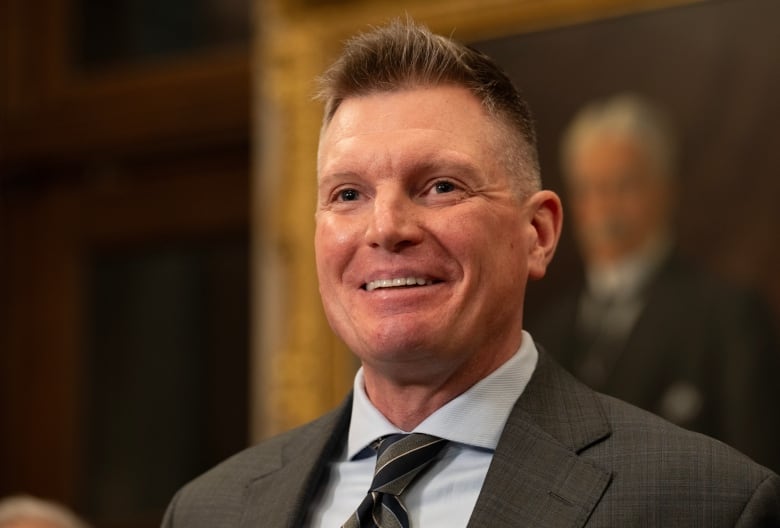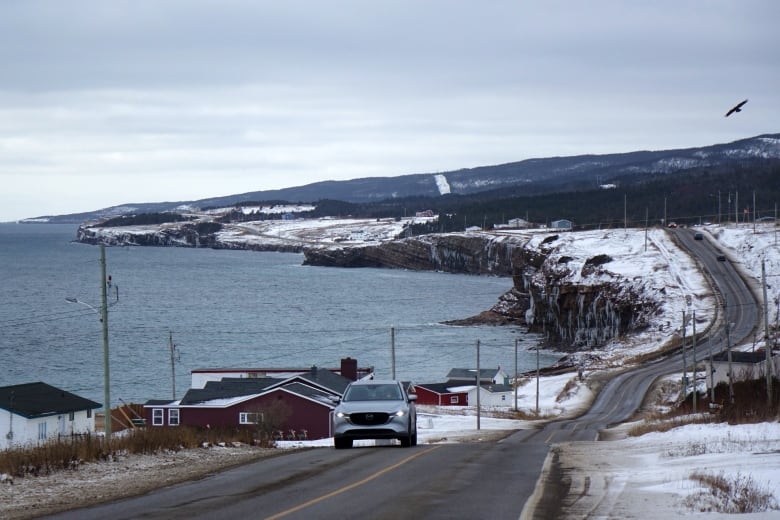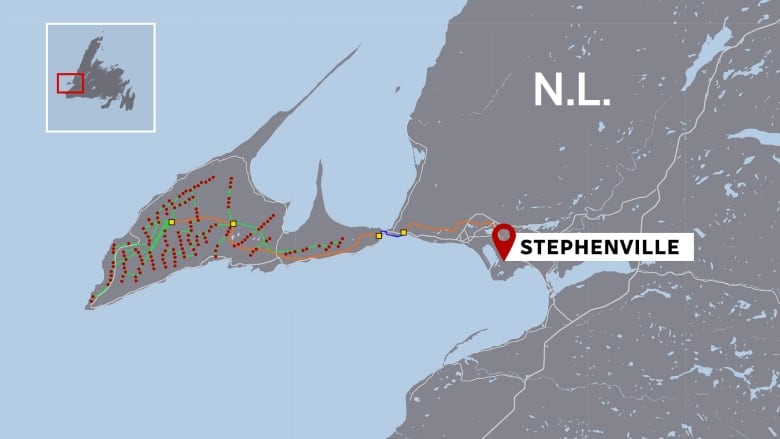
A massive wind-to-hydrogen operation proposed for Newfoundland’s west coast has not been officially given the go-ahead, but the project continues to gain traction.
If World Energy GH2’s megaproject moves from potential to realization, it could prove to be the kickoff for Canada’s foray into the growing global energy transition that officials say will be worth $1 trillion by 2040.
This week, World Energy’s attempt to get Canada’s first such project off the ground secured $128 million in federal public money through what’s called a credit facility — essentially a line of credit for the company so it doesn’t have to apply for new loans each time it needs money.
That money is coming from the federal government’s Canada Account, which is “used to support export transactions which we are unable to support, but which are determined by the minister for international trade to be in Canada’s national interest,” according to Export Development Canada, the federal Crown corporation administering the financing.
Other recent transactions through the Canada Account include a financing deal in August for a green hydrogen-ammonia project by EverWind N.S. Holdings in Nova Scotia and a handful of transactions to the Trans Mountain Corporation to support the company’s pipeline on Canada’s west coast.
World Energy did send up a flare in July 2022 when chairman John Risley told CBC News the company wouldn’t ask for provincial support but would likely file an application with the Canada Infrastructure Bank — a different federal Crown corporation mandated to invest in infrastructure that benefits Canadians.
“But we’ve not applied to either government, either provincial or federal, for any grants and we don’t intend [to],” Risley said at the time.
On Thursday, World Energy CEO Sean Leet told CBC News the Canada Account loan isn’t important just to the Newfoundland project but to the industry as a whole.

Leet said renewable products and renewable energy cost more to produce so it’s important they have the financing available to move forward.
“We’re in the development phase of the project, so this loan facility will go toward the development expenses, or the dev-ex as we call it, and that’s extremely important for advancing the project to financial close,” he said.
‘Urgency’
The plans for the project have been very public for a couple of years: more than 300 wind turbines on the Port au Port Peninsula and Codroy Valley, a hydrogen-to-ammonia plant in nearby Stephenville and ambitions to supply Europe with clean energy as it transitions off Russian oil.
Both the provincial and federal governments appear eager to get the ball rolling.
In October 2022, Premier Andrew Furey came under fire for going on a fishing trip to a resort owned by Risley in July 2021. Risley was there for at least part of Furey’s visit, along with a friend of the premier’s: Brendan Paddick, a World Energy director.
Furey defended his trip, insisting he paid for the trip himself and that he his “ethical walls” were up. He said wind farms and hydrogen plants didn’t come up during his stay.
In August, legislative standards commissioner Ann Chafe wrote in a report that Furey did not enter into a conflict of interest or violate the House of Assembly code of conduct.

And, as Federal Labour Minister Seamus O’Regan put it during Wednesday’s funding announcement, there’s a hurry to get in on the hydrogen-ammonia transition.
“We are here today because the team at World Energy GH2 is in a hurry. We need to get this project off the ground and signal to the world we are in the green hydrogen game now. That’s the urgency that you need to have in this industry,” he said.
Germany emerged as an early suitor, and a visit to Stephenville by Canadian and German top officials in August 2022 sealed the deal with a new “hydrogen alliance.”
But residents of the region are divided on what the megaproject will mean for them.
Some say it will be a boost for an area declining in age and population, guaranteed jobs into the future to attract young Newfoundlanders working away from home to come back and settle down, and economic spinoff to boost struggling local businesses.
The company’s initial environmental impact statement, submitted to the provincial government in August, said the lifespan for entire project is expected to be about 30 years, with an additional year for decommissioning for the Port au Port and Codroy Valley sites.
A final hurdle
On the other side, some residents say they’re concerned about the project’s impact on the environment. Protests in the region have pushed back against any progress. Some residents say they’ve been left in the dark without a complete understanding of what could land in their backyards.
Then there’s the little detail of still having to pass the province’s environmental assessment. That decision remains up in the air. World Energy submitted an amended impact statement to government in January, and the public has until March 20 to comment.
Environment and Climate Change Minister Bernard Davis is expected to give his decision on April 9.

But that tiny speed bump hasn’t slowed down the company.
In September 2022 World Energy signed memorandums of understanding with Qalipu First Nation and the town of Stephenville.
In May, South Korea-based construction engineering company SK Ecoplant invested $50 million US.
A month later, World Energy bought the Port of Stephenville.
Then, in August, the company secured roughly 266,000 acres of Crown land.
All for a project that has yet to be given the green light.
Download our free CBC News app to sign up for push alerts for CBC Newfoundland and Labrador. Click here to visit our landing page



